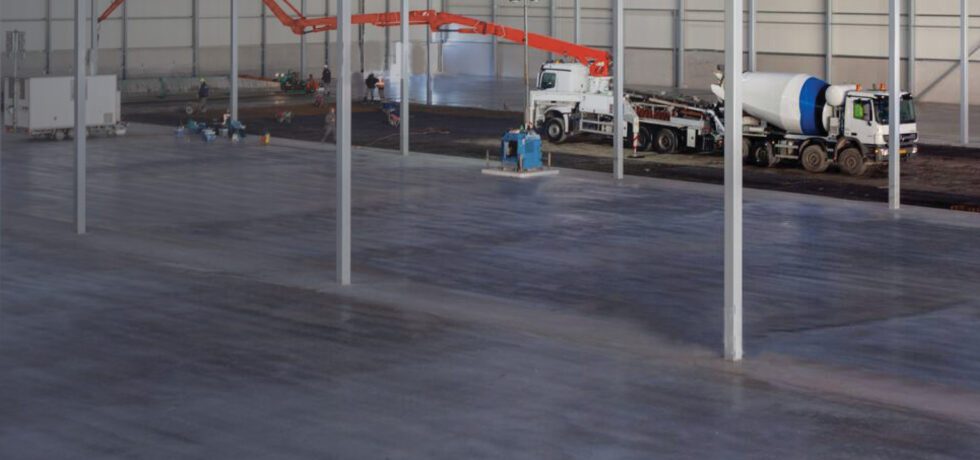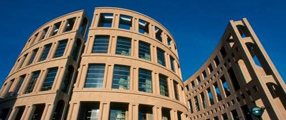Multiple elements can wear concrete down over time, from environmental factors to heavy machinery and traffic. But what if concrete producers can turn these challenges into profitable opportunities?
Below are three key ways concrete producers can profit from the production and marketing of durable concrete:
1. Explore New Verticals and Niches
Certain industries and niches, such as distribution centers, farms, and manufacturing hubs, experience high traffic and heavy machinery movement. These areas require exceptionally durable concrete solutions. Concrete producers who specialize in these ultra-durable mixes can cater to these niche markets — often with less competition and higher profit margins.
1. eCommerce Distribution Centers, Warehouses, and Third-Party Logistics (3PL) Hubs
Curling and shrinkage are problematic in distribution centers, warehouses, and 3PL hubs due to the sheer quantity of joints required in a large floor space. If the joints curl up, forklifts and automated picking machinery will hit them, creating a maintenance nightmare — not just related to the floor slab but also to the machinery. A large distribution center could face routine maintenance costs of up to USD $100,000 per year due to poor flooring.
Durability and abrasion resistance are must-have considerations in new builds or slab replacements in distribution centers, warehouses, and 3PL hubs.
2. Farming
The agricultural sector faces unique challenges due to the abrasion on concrete floors. Confinement conditions on modern farms where concrete floors are abrasive cause excessive wear on animals’ soles, increasing exposure to manure slurry and moisture. This increases the potential for the development of infectious skin disorders. This problem is inhumane to animals and costly to farmers — 15% of cows culled from dairy herds in the United States were culled as a “direct effect” of lameness, and 49.1% of culling was due to the “indirect effects” of lameness.
Durable concrete with good abrasion resistance can reduce health problems in cattle, decrease culling, and improve profitability.
3. Manufacturing
A manufacturing facility’s effectiveness — especially one that relies on automation and running heaving machinery — depends significantly on the quality of its concrete flooring. The more machinery and traffic in factories, the more durable and abrasion-resistant the concrete floors must be.
4. Public Sector Projects
Government projects typically value durability since they involve substantial investments of taxpayer money. Using durable concrete ensures that structures will stand the test of time, minimizing the need for frequent repairs and replacements. This not only enhances the lifespan of the project but also reduces the overall maintenance costs over its lifetime, ensuring fiscal responsibility.
2. Capitalize on Sustainable Construction Trends
Ordinary concrete produces more carbon emissions than the aviation industry because cement — the key ingredient that gives concrete its strength — has a large environmental footprint. According to the International Energy Agency, cement is responsible for up to 8% of the world’s carbon emissions and 7% of industrial energy consumption.
However, the narrative around concrete is changing. As global efforts intensify to mitigate climate change, innovative solutions like Supplementary Cementitious Materials (SCMs), carbon mineralization, and durability enhancements are paving the way for a more sustainable concrete future.
One such innovation is Hard-Cem-based durable concrete that reduces the need for frequent replacements or repairs — lowering the overall carbon footprint of a structure. Producers can promote their durable concrete as an eco-friendly product, attracting clients that are ready to pay a premium for sustainable solutions.
Since many green building certification programs award credits for using sustainable and long-lasting materials, concrete producers can tap into a growing segment of eco-conscious clients, contractors, and consultants aiming for green building certification.
The bottom line? Producers that are not thinking about developing sustainable concrete mixes will miss out on this business opportunity and lose significant market share to competitors, as more industry associations and government bodies set standards for carbon-reducing building practices.
3. Boost Margins with Value-Added Products
The market today is filled with clients demanding high-performance products. They’re looking beyond just the basic structure to focus on longevity, less maintenance, and environmentally friendly solutions.
Durable concrete, achieved through mix optimizations like the introduction of admixtures like Hard-Cem and quality aggregates, serves as a value-added product with long-term cost savings, reduced maintenance, and the environmental benefits.
Producers can price these specialty concretes at a premium due to their enhanced qualities, boosting their revenue and profit margins.
Increase Profits with Hard-Cem
Hard-Cem is a trusted concrete admixture for abrasion and erosion resistance that replaces conventional wear layers like dry shakes or liquid densifiers.
Added integrally to the mix, Hard-Cem is twice as durable as the leading post-applied wear layers and enables concrete producers to deliver significant value-added solutions to clients.
To learn more about how Hard-Cem can enhance your concrete business, reach out to our team.



